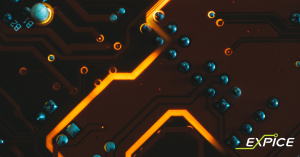 If you are involved in the design and production of PCBs, you may have already come across the term "Gerber file". If you are completely new to the PCB manufacturing process and don't yet know what Gerber files are, it is good to learn as soon as possible what Gerber files are, how to use them and what purpose they serve. Providing the correct Gerber files will help in the production of a future-proof PCB and can save costs.
If you are involved in the design and production of PCBs, you may have already come across the term "Gerber file". If you are completely new to the PCB manufacturing process and don't yet know what Gerber files are, it is good to learn as soon as possible what Gerber files are, how to use them and what purpose they serve. Providing the correct Gerber files will help in the production of a future-proof PCB and can save costs.
A Gerber file, what is that?
The most commonly used file format for PCB production is called Gerber. When manufacturers request so-called Gerbers, or Gerber files, they are actually referring to ASCII files (which stands for American Standard Code for Information Interchange) that contain Gerber-formatted data; essentially nothing more than a text file that can be interpreted by specific software. However, a Gerber file is one of the most important files you will encounter during the production of a PCB. Think of it as the recipe in which you as a customer indicate to the PCB manufacturer what needs to be done with the raw materials to achieve the intended end product. to manufacture. To avoid unnecessary costs and other problems, you want your ''prescription'' to be as accurate and complete as possible.
”A Gerber file is one of the most important files you will encounter during the production of a PCB”
Is supplying one Gerber file sufficient for production?
A Gerber file itself knows nothing about design rules, net connectivity, or component libraries; it is simply a two-dimensional file that indicates where the production equipment copper, solder mask or silk screen (screen printing screen) should be placed for the 'white print' (testing and indication). One Gerber file provides information for one PCB feature on one layer. So if you have a two-layer board and each side requires copper, solder mask and silkscreen, you will need six Gerber files. You may also need a separate Gerber file to identify the outline of the board.
How do you create a Gerber file?
You can create your Gerber files yourself with software such as EAGLE (Easily Applicable Graphical Layout Editor) from Autodesk, or Altium Designer. You can assume that every PCB design package can generate a Gerber. If you don't have much experience generating Gerber files, Expice suggests the following approach: choose a manufacturer that provides specific instructions for generating Gerber files – or call us, we'll be happy to help! If you follow the instructions carefully, you will almost certainly avoid possible consequences of incorrect Gerber files: a delay in the manufacturing process (more likely) or a non-functioning PCB
What you provide in addition to the Gerber file: Drill file ('drill file')
However, simply supplying a Gerber file is not sufficient. You will also need to generate a file indicating the position and size of each hole drilled through your board, i.e.; holes for mounting components if not through-metalized, as vias. This is called the NC (numerical control) analysis file; you may also see “Excellon drill file” (sourced from Excellon Automation, a company that makes equipment used in the manufacture of printed circuit boards). Again, the safest approach here is to follow specific instructions from us or PCB manufacturer, which will avoid a lot of uncertainty and even expense.
Layer Stack Up file
The requirements for the design of a PCB are often described in a so-called 'Layer Stack-Up file'. This text file indicates, among other things, what color the PCB should be. This is often green, but red, black or white are also possible. You can also indicate here what the thickness of the PCB should be, and how thick the intermediate layers of the PCB may be. It also states what the copper thickness should be. Do you have any doubts about whether you have described everything? Let us know.
The following: ODB++ versus Gerbers
Gerber files are universally accepted, so it is advisable to take the time to familiarize yourself with the Gerber generation and gradually establish a Gerber routine that will allow you to create PCB production files quickly and painlessly. However, in some situations it may be better to use ODB++ files. After all, managing multiple Gerber files can be a bit of a pain, according to some. The advantage of the ODB++ format: it is a single data structure that is generated without extensive input from the designer.
In conclusion
Gerber files are therefore the construction drawing of the PCB showing all the essential components. On this basis we can produce a PCB together with the material list. At Expice we can provide extensive advice in the field of Gerber files. As indicated, it is advisable to contact the manufacturer so that you are immediately on the same page with regard to the wishes and requirements of both you as the customer and the person who will produce the PCB. Do you want to know more? Please contact us now or download our e-book 'The Ultimate Guide: how do I design and develop a future-proof PCB?
Curious about what Expice can do for you? Expice is happy to look with you for unnecessary risks and opportunities for improvement.
Do you need help with the production of your PCBA or further development? Please contact us!
Pascal Immink
Account manager
- E-mail: p.immink@expice.nl
- Direct: +31 6 52 652 522
- General: +31 229 284 700
https://www.expice.nl/blog/het-aanleveren-van-een-pcb-design-wat-is-een-gerber-bestand/